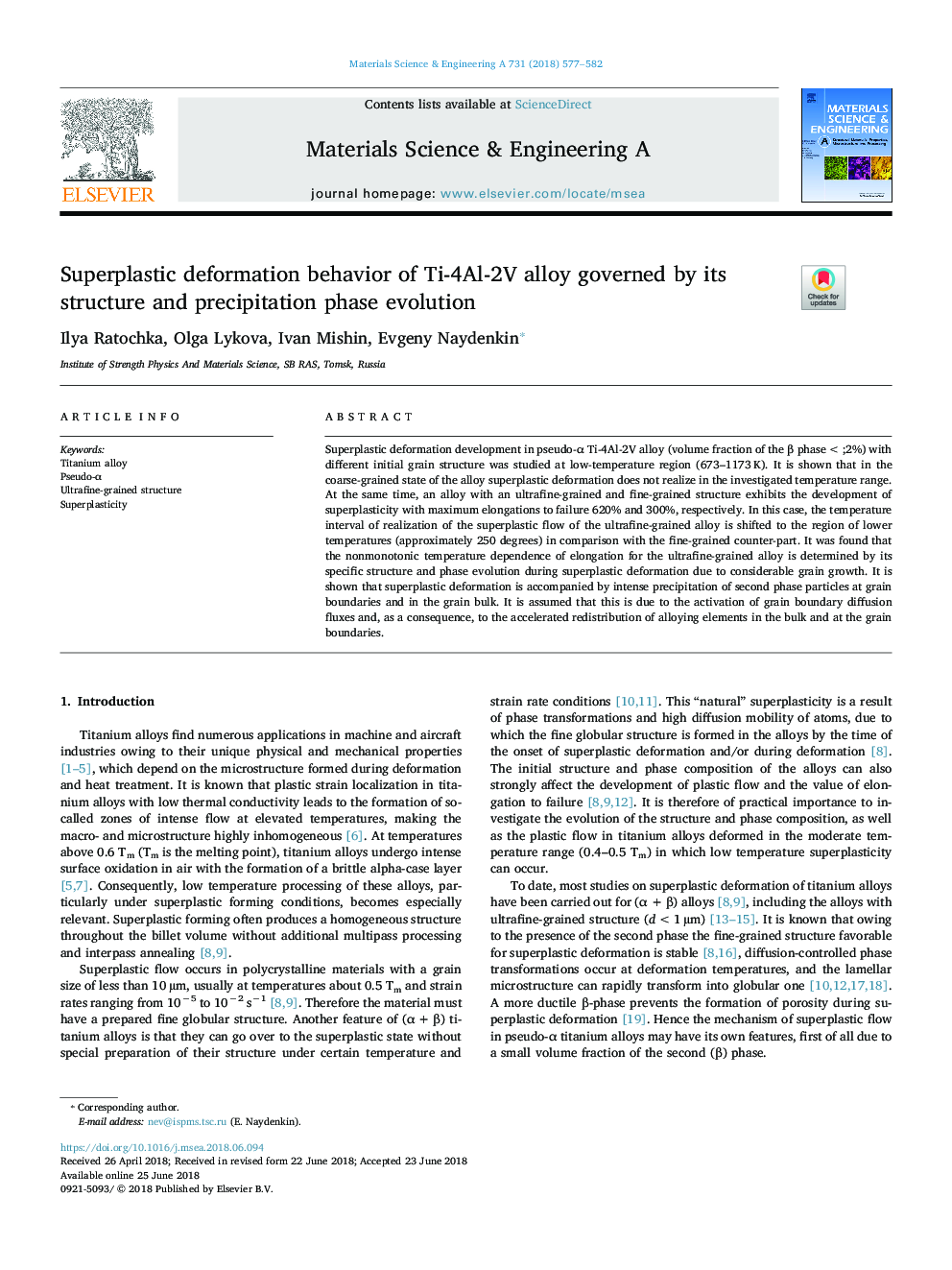| Article ID | Journal | Published Year | Pages | File Type |
|---|---|---|---|---|
| 7971811 | Materials Science and Engineering: A | 2018 | 6 Pages |
Abstract
Superplastic deformation development in pseudo-α Ti-4Al-2V alloy (volume fraction of the β phase <;2%) with different initial grain structure was studied at low-temperature region (673-1173â¯K). It is shown that in the coarse-grained state of the alloy superplastic deformation does not realize in the investigated temperature range. At the same time, an alloy with an ultrafine-grained and fine-grained structure exhibits the development of superplasticity with maximum elongations to failure 620% and 300%, respectively. In this case, the temperature interval of realization of the superplastic flow of the ultrafine-grained alloy is shifted to the region of lower temperatures (approximately 250 degrees) in comparison with the fine-grained counter-part. It was found that the nonmonotonic temperature dependence of elongation for the ultrafine-grained alloy is determined by its specific structure and phase evolution during superplastic deformation due to considerable grain growth. It is shown that superplastic deformation is accompanied by intense precipitation of second phase particles at grain boundaries and in the grain bulk. It is assumed that this is due to the activation of grain boundary diffusion fluxes and, as a consequence, to the accelerated redistribution of alloying elements in the bulk and at the grain boundaries.
Related Topics
Physical Sciences and Engineering
Materials Science
Materials Science (General)
Authors
Ilya Ratochka, Olga Lykova, Ivan Mishin, Evgeny Naydenkin,
